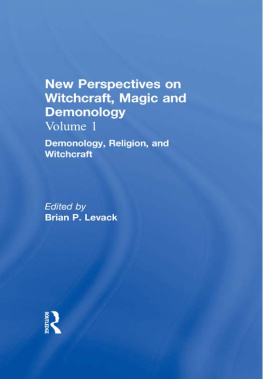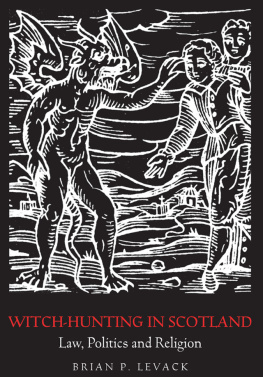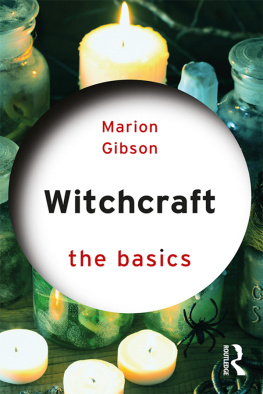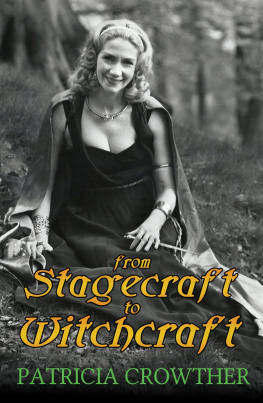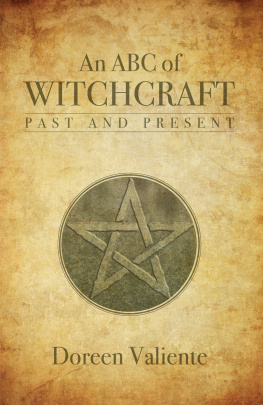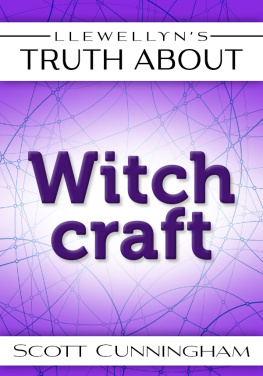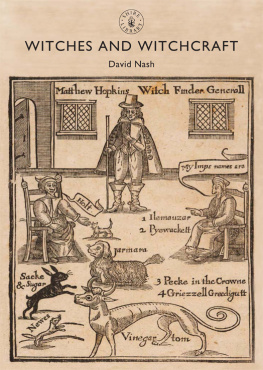New Perspectives on Witchcraft, Magic and Demonology
Volume 1
Demonology, Religion, and Witchcraft
Series Content
Volume 1
DEMONOLOGY, RELIGION, AND WITCHCRAFT
Volume 2
WITCHCRAFT IN CONTINENTAL EUROPE
Volume 3
WITCHCRAFT IN THE BRITISH ISLES AND NEW ENGLAND
Volume 4
GENDER AND WITCHCRAFT
Volume 5
WITCHCRAFT, HEALING, AND POPULAR DISEASES
Volume 6
WITCHCRAFT IN THE MODERN WORLD
New Perspectives on Witchcraft, Magic and Demonology
Volume 1
Demonology, Religion, and Witchcraft
Edited with introductions by
Brian P. Levack
University of Texas,
Published in 2001 by
Routledge
29 West 35th Street
New York, NY 10001
Published in Great Britain by
Routledge
11 New Fener Lane
London EC4P 4EE
Routledge is an Imprint of Taylor & Francis Books, Inc.
Copyright 2001 by Routledge
Printed in the United States of America on acid-free paper.
All rights reserved.No part of this book may be reprinted or reproduced or utilized in any form or by any electronic, mechanical, or other means, now known or hereafter invented, including any photocopying and recording, or in any information storage or retrieval system, without permission in writing from the publishers.
10 9 8 7 6 5 4 3 2 1
Library of Congress Cataloging-in-Publication Data
New perspectives on witchcraft / edited with introductions by Brian P. Levack.
p. cm.
Contents: v. 1. Demonology, religion, and witchcraft -- v. 2. Witchcraft in continental Europe -- v. 3. Witchcraft in the British Isles and New England -- v. 4. Gender and witchcraft -- v. 5. Witchcraft, disease, and popular healing -- v. 6. Witchcraft in the modern world, 1750-2000.
ISBN 0-8153-3668-3 (set)
1. Witchcraft--History. I. Levack, Brian P.
BF1566 .N48 2002
133.4--dc21 2001048489
ISBN 0-8153-3668-3 (set)
ISBN 0-8153-3669-1 (v.1)
ISBN 0-8153-3671-3 (v.2)
ISBN 0-8153-3672-1 (v.3)
ISBN 0-8153-3673-X (v.4)
ISBN 0-8153-3674-8 (v.5)
ISBN 0-8153-3670-5 (v.6)
Contents
Julio Caro Baroja
Richard Kieckhefer
Richard Kieckhefer
Charles Zika
Franco Mormando
Eric Wilson
Stuart Clark
Sigrid Brauner
Louise Yeoman
Fernando Cervantes
Elizabeth Reis
Richard P. Gildrie
Lyndal Roper
Denis Crouzet
Fernando Cervantes
Robin Attfield
G.K Waite
Marijke Gijswijt-Hofstra,
Peter Elmer
Introduction
During the period of witch-hunting in Europe (roughly 1400 to 1750), the crime of witchcraft involved two types of alleged activity. The first, known in Latin as maleficium, was the practice of maleficent magic. This was the use of some kind of supernatural, mysterious, or occult power to harm another human being. The second was diabolism, or the worship of the Devil. The two were connected by the belief, shared by most educated Europeans, that all magic, harmful as well as beneficent, was performed through the power of the Devil. The belief developed, therefore, that in exchange for the use of demonic magical powers witches had made a pact with the Devil, by which they pledged themselves to his service. This claim originated with reference to the activities of learned ritual magicians or necromancers, many of whom were clerics, who sought to harness demonic power to achieve personal wealth, power, or fame.
During the fifteenth century, however, the idea of the pact was applied to practitioners of simpler forms of village magic; many were poor, illiterate villagers, and most were women. As this process occurred, the idea of the pact itself was transformed. Instead of being negotiated between two roughly equal parties, each trying to outwit each other, the pact came to be seen as an expression of the desire of women to become servants of the Devil and to have sexual relations with him. These women, identified as heretics and apostates because they had rejected their Christian faith and entered the Devil's service, were believed to be part of a vast demonic conspiracy to destroy Christian civilization.
Scholars who have studied European witchcraft have taken many different routes in an effort to understand this phenomenon. One approach has been to investigate changing ideas of the Devil and to relate those views to the prosecution of individuals for witchcraft. This has involved investigations of late medieval and early modern demonology, the body of mainly clerical writings about the Devil and his powers. It has also involved the study of the reception of such ideas among the lower clergy and their lay parishioners. This latter investigation is riddled with controversy, however, since it is uncertain the extent to which theological ideas about the Devil penetrated local communities. In bringing charges against witches, for example, villagers rarely referred to the demonic or diabolical nature of the crime of witchcraft, only to the alleged infliction of magical harm. On the other hand all Europeans in the late medieval and early modern period, including those who were illiterate, shared a common religious culture that included a recognition of demonic power in the world.
The articles in this collection reveal the complexity of early modern demonological thought and the variety of ways in which it developed. Julio Caro Baroja provides a comprehensive survey of Catholic demonology, showing how the witch of the classical period was gradually transformed into the magician who made a pact with the Devil. This process took place mainly in those areas of Europe where classical civilization was strongest. Caro Baroja also studies the works of seventeenth-century Catholic demonologists like the Jesuits Friedrich von Spee and Adam Tanner, who began to challenge the views of earlier demonologists as well as the conduct of the witch-hunts themselves. Two articles by Richard Kieckhefer on the subject of medieval magic contribute to our understanding of the relationship between the practice of magic and the science of demonology. The first argues that all magic, natural and demonic, operated on the basis of rational principles, while the second explains how the categories of the holy and the unholy became blurred when ritual magicians conjured up demons. Charles Zika writes about a relatively unknown demonological treatise by Paulus Frisius, The Devil's Hoodwink (1583), which illustrates the way in which images taken from traditional folklore were integrated into a theological and diabolical framework.
Some of the articles in this collection explore the relationship between demonological ideas and the actual prosecution of witches. Franco Mormando discusses the part played by the great Franciscan preacher Bernardino of Siena in one of the earliest witchcraft trials in Rome in 1426. Eric Wilson reinterprets the famous bull of Pope Innocent VIII, Summis desiderantes, issued in 1484 to Heinrich Kramer (Henricuslnstitoris), the principal author of the Malleus maleficarum (1487), the most famous demonological treatise of the early modern period. Wilson downplays the demonological significance of the papal bull by showing that it was essentially a political document intended to facilitate Kramer's witch-hunting activities in the diocese of Brixen. Stuart Clark's article on Protestant demonology emphasizes that Protestant demonologists, most of whom were ministers, developed their ideas in a pastoral tradition and leveled charges of diabolism mainly against practitioners of popular beneficent magic rather than against maleficent witches. Sigrid Brauner studies the views of the great Protestant reformer Martin Luther regarding witchcraft. She emphasizes Luther's rejection of the argument of the

